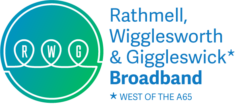To paraphrase this article, using the mobile (4G) network to bring broadband to rural communities feels like it should be an easier answer than laying miles of cable, but along with the advantages, there are a number of drawbacks. From the Broadbandchoices article:
Pros of 4G over home broadband
- Packages are often far more flexible – 30-day contracts abound that can be cancelled whenever you want.
- Speeds can be pretty darn fast, sometimes faster than home broadband connections.
- A mobile broadband device is portable, so you can take it wherever you take your laptop or tablet.
- It eliminates the need to pay for home broadband, line rental, and a mobile plan – using 4G for your home connection could potentially cut out some bills completely.
Cons of 4G over home broadband
- Mobile broadband, whether from a hotspot or your smartphone, usually has far stricter download limits than even the cheapest of home connections.
- Tethering from a mobile isn’t always possible. Not all smartphones have it as a feature, some networks don’t allow it, and some have narrow download limits for tethering. An unlimited data plan from Three, for instance, has a separate Personal Hotspot allowance of 12GB.
- It’s more expensive than similar home broadband packages… which often give you unlimited downloads, comparable speeds, and extras like internet security or TV.
- It’s less reliable. A lot of things can get in the way of a wireless signal, and if it goes down or starts being slow, there’s very little you can do about it.
- Those fast speeds have also been known to be pretty inconsistent.
- 4G can reach good speeds (40+ Mb), but fixed line broadband can reach much higher ones – up to 1Gb with fibre optic cable.
For those reasons among others, key members of the Rathmell / Wigglesworth group are of the opinion that 4G is unlikely to be the best solution for our villages.
